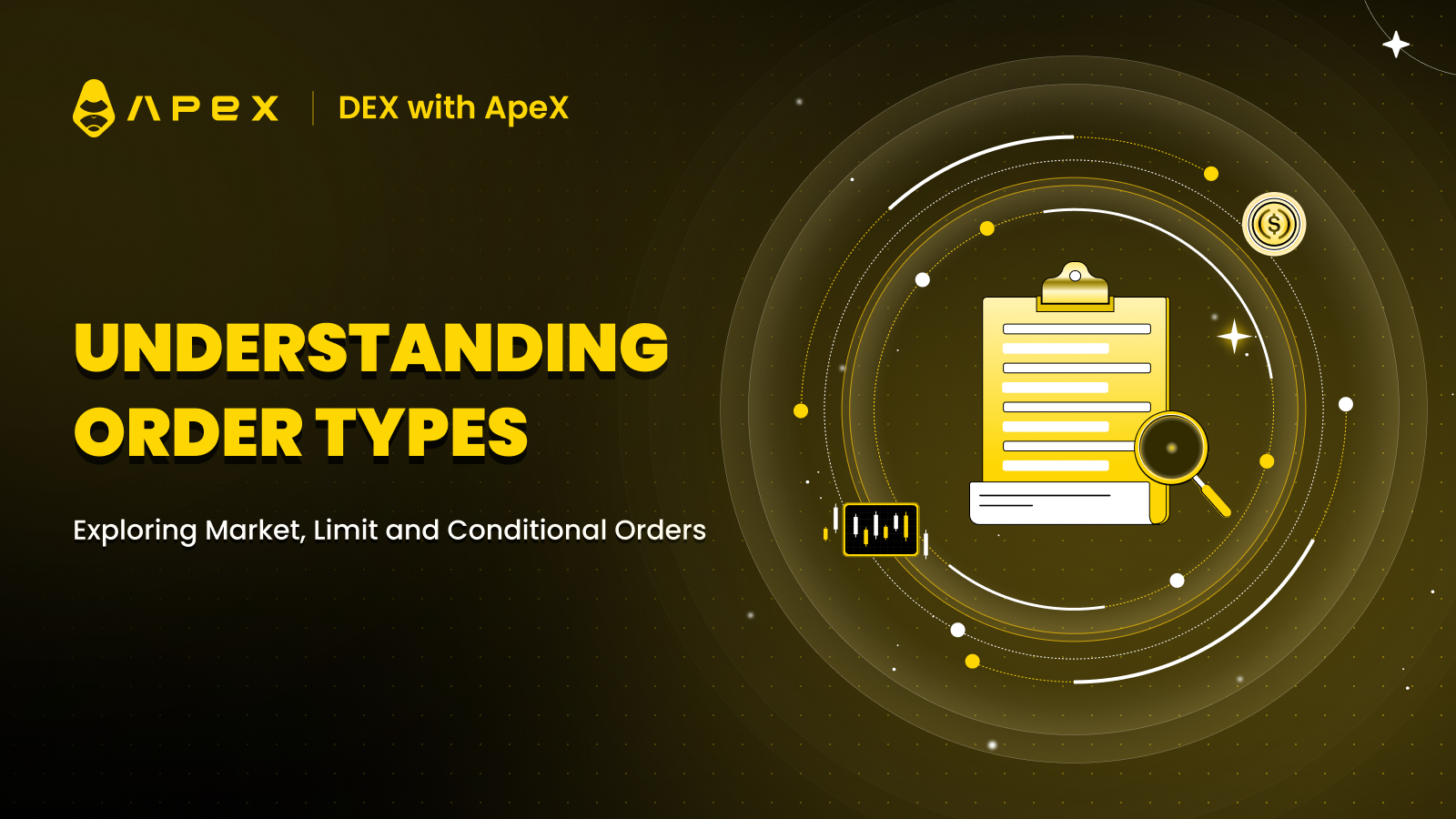Cryptocurrency trading facilitiates various order types, each designed to help traders in executing buy or sell orders at the most opportune time and price. These order types are tailored to help you optimize your strategies, catering to specific market conditions and individual preferences. Before engaging in trading, it's crucial to grasp how these order types differ to align them effectively with your trading strategy.
This guide will walk you through the three essential order types, all supported on ApeX Pro: market orders, limit orders and conditional orders.
Market Orders
A market order is a basic yet essential order type for traders. When a trader places a market order, they indicate a desire to buy or sell a contract at the best available price in the market at that moment. This type of order does not require specifying a price; the trader only needs to state the quantity they wish to transact.
One key aspect of market orders is their immediate execution at the current market price. However, this immediate execution comes with certain risks and limitations. For example, the final execution price may not exactly match the price observed on the exchange at the time of placing the order. This discrepancy is due to the dynamic nature of the order book, where prices can fluctuate.
Pros of Market Orders
Immediate Fulfillment: Market orders are ideal for traders who do not want to wait for a specific target price. They are executed promptly, typically within minutes or even seconds.
Guaranteed Execution: Unlike other order types, market orders are almost always filled, making them a reliable choice for immediate transactions.
Cons of Market Orders
Slippage: This is a significant drawback where the order is executed at a less favorable price than expected. Slippage occurs due to a lack of sufficient liquidity to fill large orders at the desired price.
Limit Orders
Limit orders are a strategic trading tool used to specify the exact price at which a trader is willing to buy or sell a contract. Unlike market orders, which execute immediately at the current market price, limit orders activate only when the market price reaches a predetermined target, set by the trader. This target price is known as the limit price.
Pros of Limit Orders
Price Control: Traders set a specific price, ensuring they do not pay more or accept less than their desired price.
Reduced Need for Constant Market Monitoring: Traders can set their desired price and wait for the market to reach this price, without needing to watch the market continuously.
Cons of Limit Orders
No Execution Guarantee: If the limit price is never reached, the order may remain unfilled.
Partial Fills: There's a possibility of partial fills, especially in markets with lower liquidity or if the order is large.
Order Ranking: Orders are ranked by price and time, so an order may not be executed immediately even if the limit price is reached.
Conditional Market vs. Conditional Limit Orders
The third important order type for perpetual traders to understand is conditional orders. Conditional orders are a valuable method for traders looking to automate their trading strategies. These orders activate and enter the order book upon meeting specific conditions, such as reaching a trigger price. With conditional orders, traders have the flexibility to set various reference prices for the trigger. These reference prices include last traded price, mark price, and index price.
Conditional orders come in two variants: conditional market orders and conditional limit orders. These orders differ from market and limit orders in that they are executed only when a chosen reference price aligns with the predetermined trigger price. When the trigger price is met, the system automatically triggers limit and market order placements.
Conditional Market Order: For this type of conditional order, the order will be executed at market price once it has been triggered.
Conditional Limit Order: For this type of conditional order, the order will be executed at the limit price once it has been triggered.
In the world of perpetual trading, having a good grasp of the various order types is crucial for success. Whether you're using market orders, limit orders, or conditional orders, understanding how these tools work will help you navigate the market more confidently and make informed decisions. This knowledge is the foundation that allows you to adapt your strategy and improve your chances of success.
All the order types discussed in this blog are available on ApeX Pro. Learn more about the above listed and more advanced order types available on ApeX Pro in our Gitbook Explainer. Happy trading!

